Cabbage variety Moscow late 15
Moscow late 15 is an old variety of White cabbage (Brassica oleracea var. Capitata), bred in 1937 at the All-Russian Research Institute of Selection and Seed Growing of Vegetable Crops (VNIISSOK settlement) by individual-family selection from a local variety of the Moscow region - Pyshkinskaya. In 1943 he was entered into the state register of breeding achievements of the Russian Federation. Approved for use in four regions: North-West, Central, Volgo-Vyatka and Far East. Authors of the variety: Yu.B. Alekseev, Petr Klapste, Horal Jiri. Suitable for commercial production.
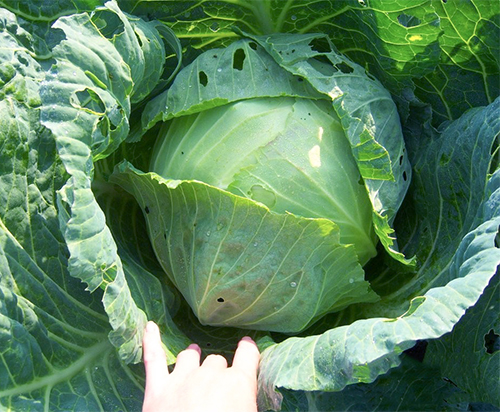
Late ripening variety. The period from germination to technical ripeness is 115 - 140 days. Since this cabbage needs a large feeding area when growing, the following planting scheme is recommended: 70 × 80 or 80 × 80 cm.
The leaf rosette is spreading, large, with a diameter of 90 - 110 cm. The leaves are wrinkled, large, round or oval, gray-green in color with a slight waxy bloom; leaf edge smooth, slightly wavy; petioles are long, thick; veins are sparse, coarse.
Heads of cabbage are large, dense, juicy, round or flat-round in shape, with an average weight of 4 - 6 kg, often reaching 10 - 15 kg (maximum weight - 18 kg). The color of the head of cabbage on the cut is white-yellow. The inner stump is of medium length or short, the outer one is high (25 - 30 cm) and thick. The yield of marketable heads of cabbage is 600 - 900 c / ha (maximum - 1015 c / ha), or 6 - 10 kg / square meter. The output of marketable products is high - 90 - 97%.
This variety is good fresh and perfect for fermentation. In the old days, it was even considered the best variety for pickling, and sauerkraut called Provencal * was made from it. Heads of cabbage are stored for six months (until about February). Transportability is average. Harvest after the first frost.
If the head of cabbage is already very large and it is time to remove it (so that it does not crack), but the frost has not yet come, you should grab it with your hands and turn it in a circle. Due to this, most of the roots will break off, and the cabbage will stop growing, but will stand in the garden without losing its properties.
Cabbage Moscow late 15 is demanding on soil fertility and moisture-loving, especially in autumn (September). It is characterized by resistance to head cracking, pests and keel damage.
Advantages of the variety: high yield, excellent taste of fermented products, long-term storage, friendly formation of the crop.
The main disadvantage is that due to the fact that the outer stump is high and the heads of cabbage are large, the plant can fall on its side. To avoid this, you need to huddle the cabbage high or use supports.
Also on the Russian market is the Moscow Late 9 cabbage, which was bred from the Moskovskaya Late 15 variety and differs from it in its increased resistance to keel.
* Provencal cabbage has different recipes. Here is one of them:
3 kg of sauerkraut;
400 g granulated sugar;
400 g of vegetable oil;
250 g of cranberries or lingonberries;
250 g of pickled grapes or plums (you can use the fruits of other stone fruit crops);
200 g of pickled apples, cut into wedges;
200 g of marinade from pickled fruits;
5 g mustard (powder).
All ingredients are thoroughly mixed, placed in a bowl (keg or jar) and poured with strained marinade. If the marinade is not available, vinegar essence or citric acid (to taste) can be used instead. You can store this dish in a cool room for two to three days (in a glacier cellar - up to 10 days).
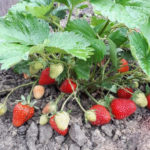
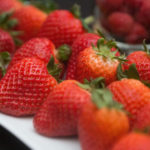
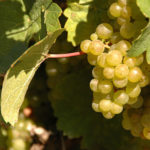
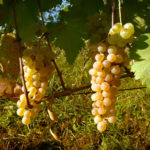
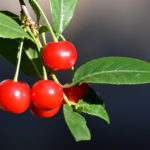
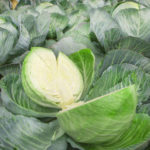



A good variety for pickling and in salads. Very responsive to feeding. In my last year, five heads of cabbage grew more than 10 kg, the rest were about 6-8 kg, very large and juicy. When fermented, it gives a lot of juice, but the cabbage is crispy and strong. It goes well for preparations, for hodgepodge and various salads. It is well stored in the cellar, only you need to choose not very large heads of cabbage, large ones have the likelihood of spoilage. Of the shortcomings - these large heads of cabbage in the fall can rot in the garden where they adjoin the ground. If you do not overlook, the floor of a head of cabbage can lick and rot. And so, this cabbage makes me happy every year, whether it was wet or dry, has never failed.